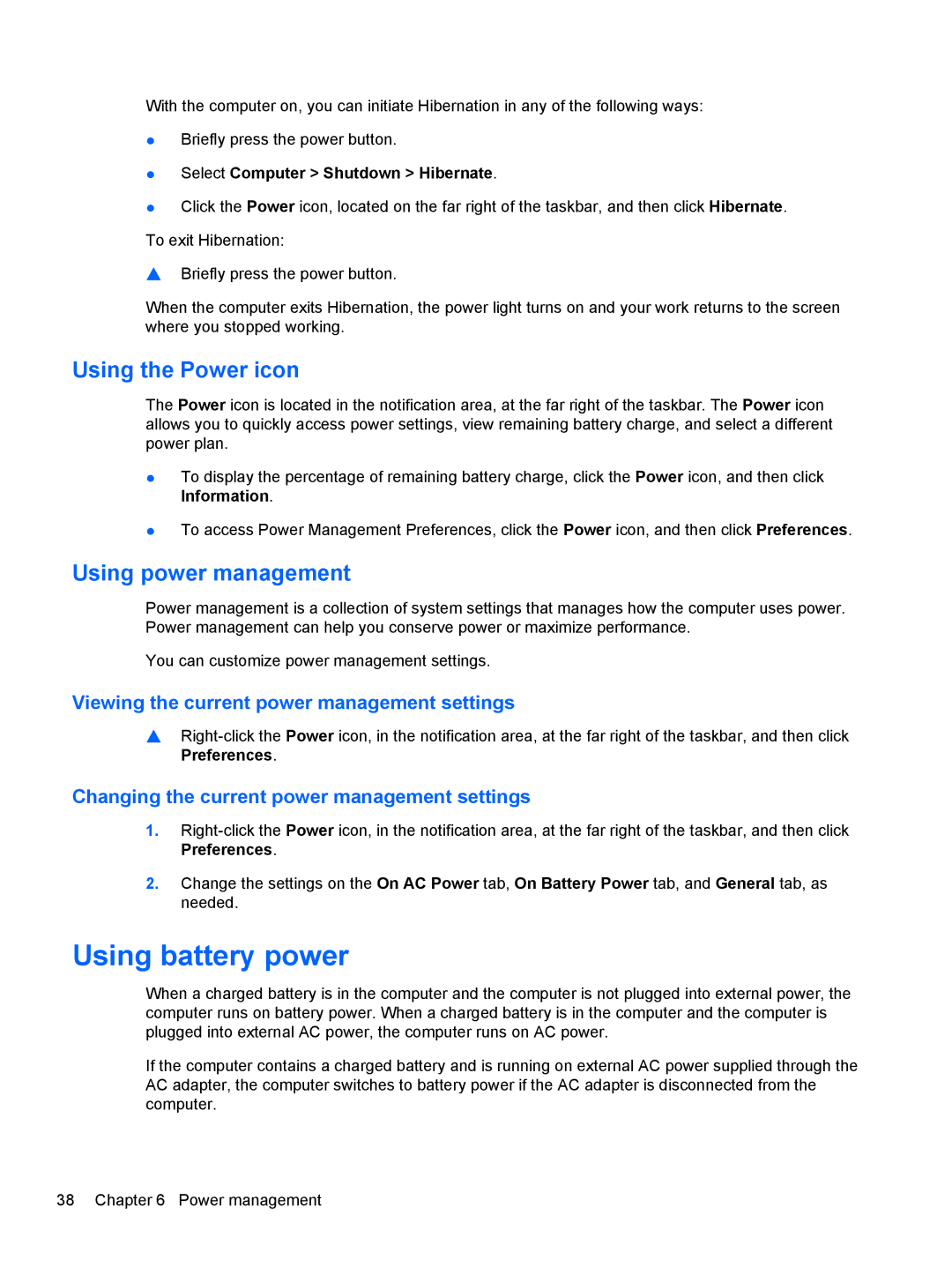With the computer on, you can initiate Hibernation in any of the following ways:
●Briefly press the power button.
●Select Computer > Shutdown > Hibernate.
●Click the Power icon, located on the far right of the taskbar, and then click Hibernate. To exit Hibernation:
▲Briefly press the power button.
When the computer exits Hibernation, the power light turns on and your work returns to the screen where you stopped working.
Using the Power icon
The Power icon is located in the notification area, at the far right of the taskbar. The Power icon allows you to quickly access power settings, view remaining battery charge, and select a different power plan.
●To display the percentage of remaining battery charge, click the Power icon, and then click Information.
●To access Power Management Preferences, click the Power icon, and then click Preferences.
Using power management
Power management is a collection of system settings that manages how the computer uses power. Power management can help you conserve power or maximize performance.
You can customize power management settings.
Viewing the current power management settings
▲
Changing the current power management settings
1.
2.Change the settings on the On AC Power tab, On Battery Power tab, and General tab, as needed.
Using battery power
When a charged battery is in the computer and the computer is not plugged into external power, the computer runs on battery power. When a charged battery is in the computer and the computer is plugged into external AC power, the computer runs on AC power.
If the computer contains a charged battery and is running on external AC power supplied through the AC adapter, the computer switches to battery power if the AC adapter is disconnected from the computer.
38 Chapter 6 Power management
